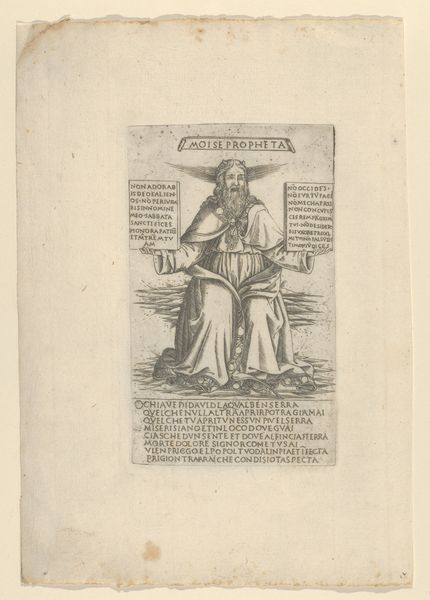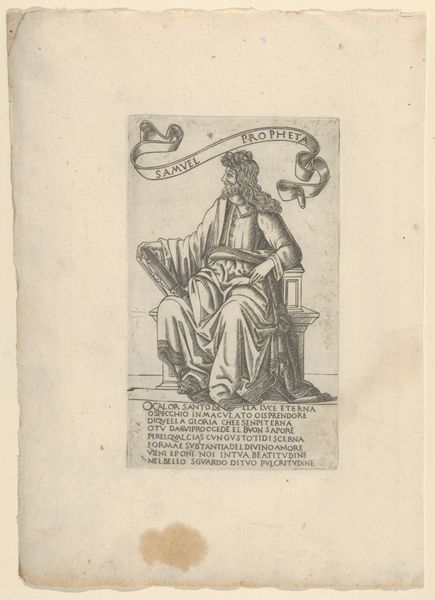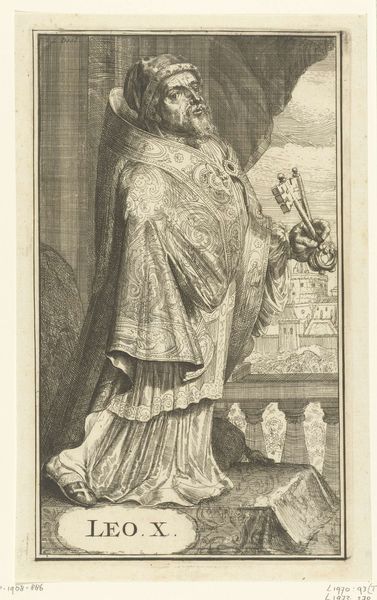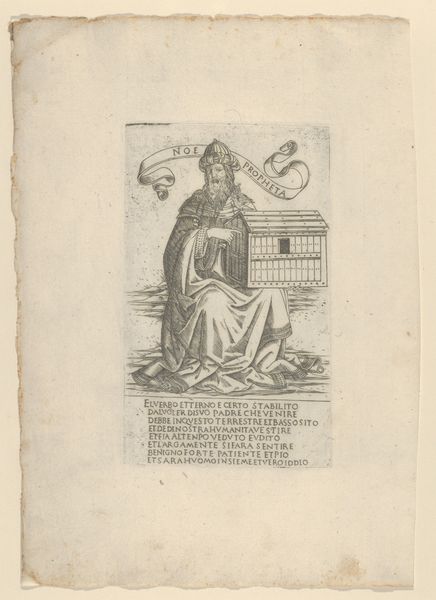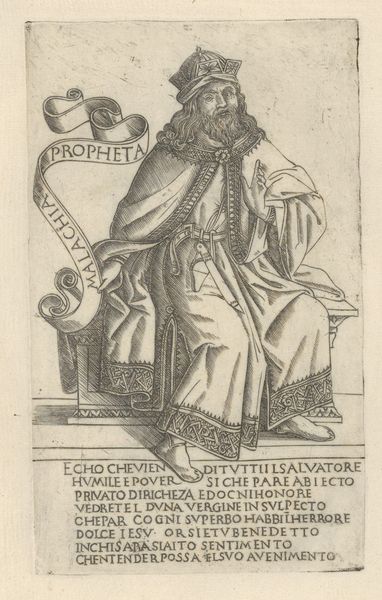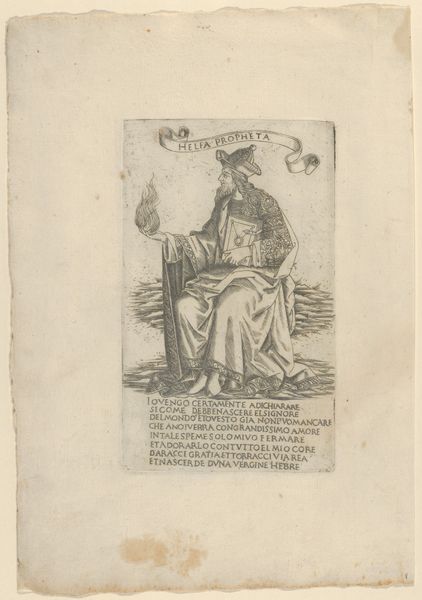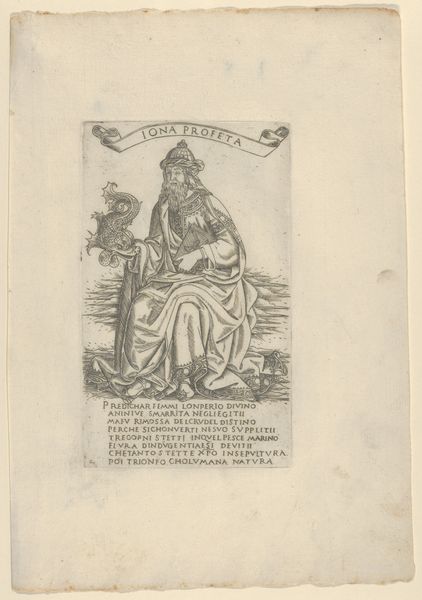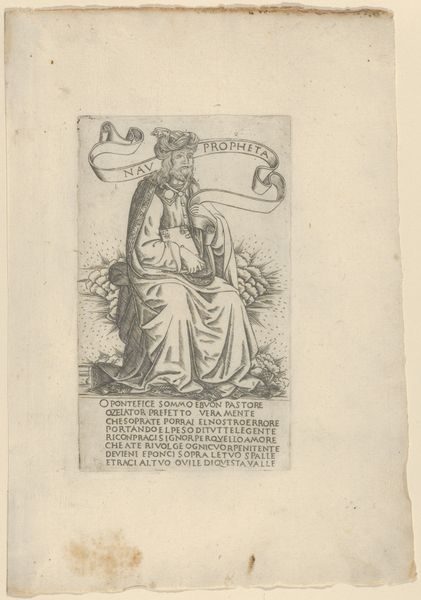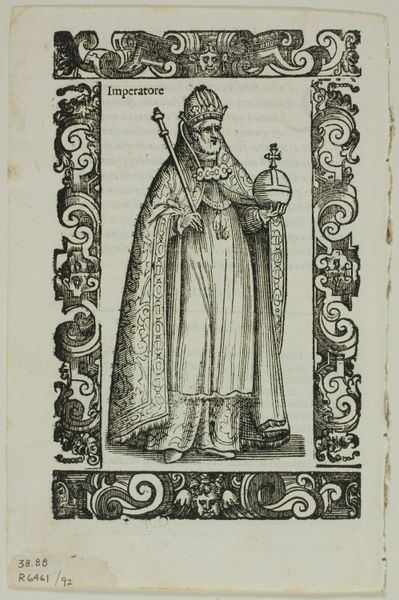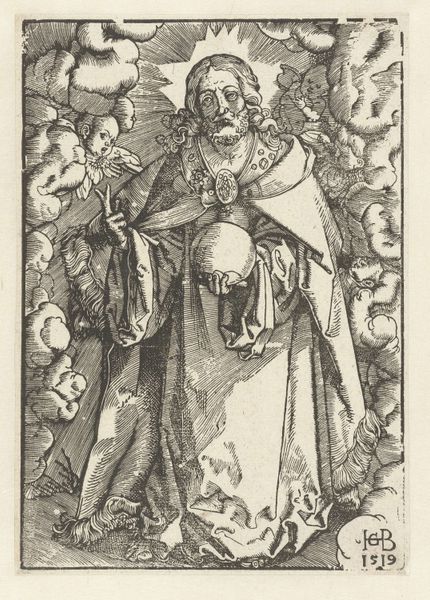
print, engraving
#
allegory
# print
#
old engraving style
#
figuration
#
11_renaissance
#
northern-renaissance
#
engraving
Dimensions: height 152 mm, width 91 mm
Copyright: Rijks Museum: Open Domain
Curator: Before us we have Philips Galle's engraving, "Christelijke Kerk," from around 1585, now residing in the Rijksmuseum. It's an allegorical print emblematic of the Northern Renaissance. Editor: My first impression? Strikingly austere, almost cold, yet undeniably commanding in its vertical composition. The central figure dominates the space with a palpable sense of authority, rendered in exquisite detail with a tonal approach reminiscent of old master drawings. Curator: Precisely. Notice how the composition uses the female personification of the Christian Church to convey its power and sanctity. The arrangement directs the gaze upwards from the inscribed Latin text "Sancta crucem, claues, calicem Ecclesia Christi" toward the radiating halo inscribed "Ecclesia," creating a symbolic representation of divine authority and its textual origins. Editor: And the semiotic richness is incredible. The keys she holds signify access and control, perhaps alluding to the Church's role as gatekeeper to salvation. The chalice further alludes to the holy communion and, therefore, faith's sustaining grace, and finally, she appears partially nude beneath the heart which she displays, perhaps to emphasize her connection to life-giving faith. But what were the socio-political factors influencing such an audacious portrayal of faith in Galle's era? Curator: The Northern Renaissance, specifically in the Netherlands, was marked by religious upheaval. Galle, working during this time, used the print medium to disseminate very specific ideologies. How he negotiated with authority and the market, and in turn who was in Galle's consumer market, were all primary functions when creating and later distributing the final piece. This artwork served not only as a devotional image but as a commentary on the evolving religious landscape of the time. Editor: You're right; the institutional pressures must have shaped this piece in significant ways. Consider, too, the meticulous lines of the engraving. See the subtle variations, the gradations of light that convey depth and texture? This attention to detail elevates the image beyond mere propaganda; it becomes an object of considerable aesthetic value. Curator: And consider the dove motif hovering over the "Ecclesia" inscription. A deliberate echo that both frames the personification below while drawing the eyes of the consumer/reader to an unmistakable declaration about the sanctity and truth of its Christian "allegory." Galle really seemed intent on emphasizing the indivisibility between its "body" and the Church. Editor: True, an emblem of profound belief amidst times of immense tension. It shows us how the political is invariably interwoven with the beautiful, in both conception and reception. Curator: A potent image encapsulating spiritual power struggles amid a transformational era of belief, skillfully rendered for an audience deeply invested in the outcome.
Comments
No comments
Be the first to comment and join the conversation on the ultimate creative platform.
